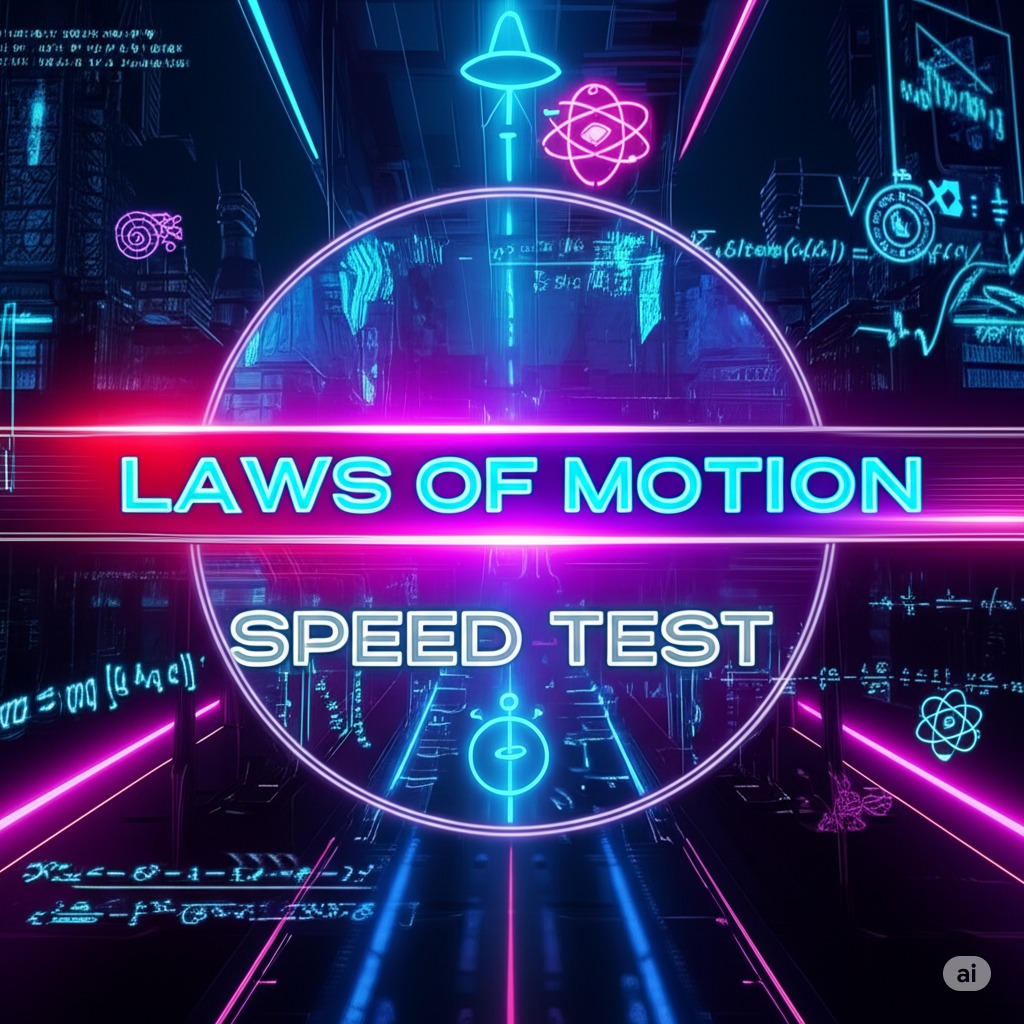Laws of Motion Mastery – Interactive Quiz & Cheatsheet
Boost your understanding of Laws of Motion with this engaging quiz and quick-reference guide tailored for exam success
Updated: 3 months ago
Categories: Mini Game, Physics, Class 11, Laws of Motion, Newton's Laws

Laws of Motion Cheatsheet
Cheat Codes & Shortcuts
- First Law (Inertia): An object remains at rest or in uniform motion unless acted upon by an external force.
- Second Law: \( F = ma \), where \( F \) is the net force, \( m \) is mass, and \( a \) is acceleration.
- Third Law: For every action, there is an equal and opposite reaction.
- Net Force: Sum of all forces acting on an object: \( \vec{F}_{\text{net}} = \sum \vec{F}_i \).
- Weight: \( W = mg \), where \( g \) is gravitational acceleration (\( 9.8 \, \text{m/s}^2 \)).
- Friction: \( f = \mu N \), where \( \mu \) is the coefficient of friction and \( N \) is the normal force.
- Momentum: \( \vec{p} = m \vec{v} \), where \( \vec{v} \) is velocity.
- Impulse: \( \vec{J} = \Delta \vec{p} = \int \vec{F} \, dt \).
- Equilibrium: If \( \vec{F}_{\text{net}} = 0 \), the object is in equilibrium (no acceleration).
- Free-Body Diagram: Diagram showing all forces acting on an object.
Quick Reference Table
| Type | Concept | Formula/Application |
|---|---|---|
| First Law | Object at rest or constant velocity | \( \vec{F}_{\text{net}} = 0 \) |
| Second Law | Force causes acceleration | \( \vec{F} = m \vec{a} \) |
| Third Law | Action-reaction pairs | \( \vec{F}_{A \text{ on } B} = -\vec{F}_{B \text{ on } A} \) |
| Friction | Opposes motion | \( f = \mu N \) |
| Momentum | Mass in motion | \( \vec{p} = m \vec{v} \) |
| Impulse | Change in momentum | \( \vec{J} = \Delta \vec{p} \) |
Advice
Draw Free-Body Diagrams: Always sketch forces acting on an object to clarify net force.
Resolve Forces: Break forces into components along x and y axes for easier calculations.
Check Units: Ensure consistency (e.g., SI units: kg, m, s) in calculations.
Equilibrium: If an object is not accelerating, set \( \vec{F}_{\text{net}} = 0 \).
Verify: Double-check calculations, especially signs of forces and directions.
Laws of Motion Quick Tips
- First Law: Objects resist changes in motion—think inertia!
- Second Law: Use \( F = ma \) to find acceleration or force.
- Third Law: Action-reaction forces act on different objects, not the same one.
- Friction: Calculate normal force first, then use \( f = \mu N \).
- Momentum: For collisions, use conservation of momentum: \( \vec{p}_{\text{initial}} = \vec{p}_{\text{final}} \).
Laws of Motion Speed Quiz
Test your speed with 5 Laws of Motion questions! You have 30 seconds per question.
Question: 1/5
Time left: 30s
Quiz Complete!
Your Score: 0/5

Group Discussions
No forum posts available.


